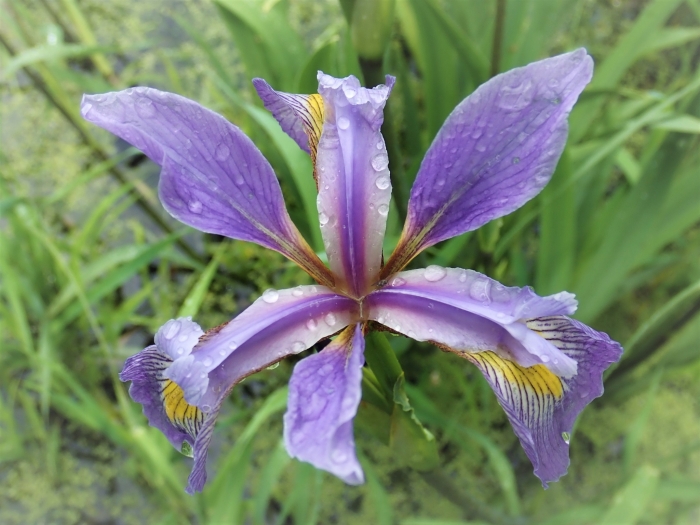Virginia Iris
(Iris virginica)
Virginia Iris (Iris virginica)
/
/

Andrea Wallace
CC BY 4.0




















































Estimated Native Range
Summary
Virginia Iris is valued for its showy flowers and ability to thrive in wet conditions, making it ideal for water gardens, rain gardens, and naturalized areas. It is also used for erosion control along waterways. In cultivation, it requires full sun to part shade and prefers consistently moist to wet soils with medium to slow drainage. While it is adaptable to various soil types, it flourishes in rich, acidic soils. Gardeners should be aware that although it is not typically prone to serious pest or disease problems, it can suffer from iris borer, root rot, and rust.CC BY-SA 4.0
Plant Description
- Plant Type: Herb
- Height: 2-3 feet
- Width: 1-3 feet
- Growth Rate: Moderate
- Flower Color: Blue, Purple
- Flowering Season: Spring
- Leaf Retention: Semi-deciduous
Growth Requirements
- Sun: Full Sun, Part Shade
- Water: Medium, High
- Drainage: Medium, Slow
Common Uses
Bee Garden, Bird Garden, Butterfly Garden, Deer Resistant, Fragrant, Hummingbird Garden, Low Maintenance, Potted Plant, Rabbit Resistant, Rock Garden, Salt Tolerant, Showy Flowers, Street Planting, Water Garden
Natural Habitat
native to wetlands, marshes, and along the edges of ponds and streams in eastern and central North America
Other Names
Common Names: Blue Flag , Southern Blue Flag , Virginia Blue Flag , Iris De Virginie , Flaggiris , 維吉尼亞鳶尾
Scientific Names: Iris virginica , Iris virginica var. shrevei , Iris virginica subsp. shrevei , Iris shrevei , Iris caroliniana , Iris virginica var. virginica , Iris versicolor var. virginica , Iris convoluta , Iris georgiana , Iris versicolor f. virginica
GBIF Accepted Name: Iris virginica L.